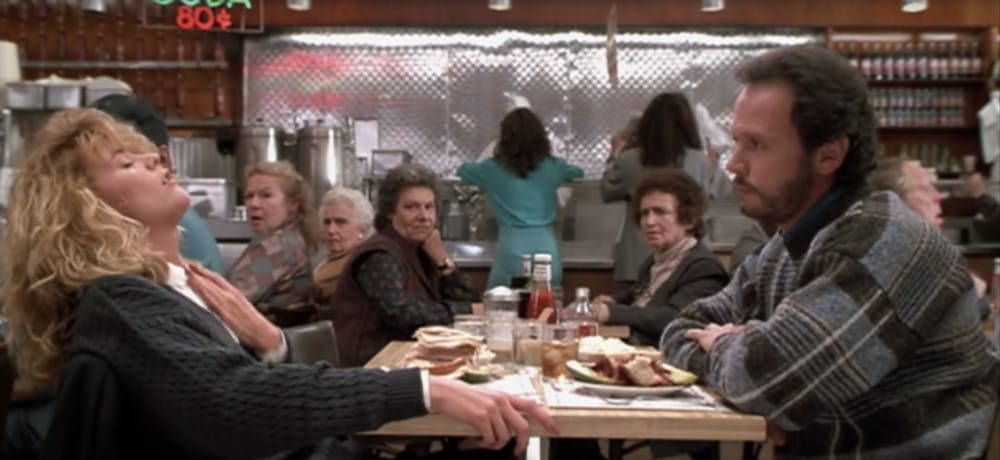Rhett Butler dragging a screaming Scarlett up the staircase to the bedroom. Olivia Newton–John prancing around in a leather suit to win John Travolta’s heart. These are just examples of scenes from classic and romantic movies that we love—but that nevertheless make us think “what the hell?” when we watch them now. Over the years, more and more people have picked up on sexism and misogyny in movies, and both cultural critics and social activists have created a way to analyze and tackle it: feminist film theory.
During the 1960s and 1970s, when second wave feminism was tackling a variety of issues, the feminist school of film theory criticism emerged. Since it comes from the world of academia, feminist film theory is broad, complicated, and wide–ranging, but the basic goal is to highlight the social, racial, and sexual underpinnings in cinema. Feminist film criticism lets us understand those “what the hell?” moments in black and white terms.
But what about the gray areas—or, perhaps, the pink ones? The romantic comedy, a Valentine’s Day and post–breakup centerpiece, has had gender and cinema scholars (along with the rest of us) feeling conflicted for years. There is a lot to unpack in the tropes and quirks of our favorite sappy movies, and feminist film criticism gives us some interesting ways to think about them.
There’s a certain amount of praise that the romantic comedy genre deserves for being female focused. Since the Golden Age, the business side of Hollywood has been largely controlled by men—not only directors and producers, but male tastes as well. Early rom–com successes, such as Some Like It Hot, weren’t marketed to female audiences, and it wasn’t until the success of movies like When Harry Met Sally in 1989 that the genre rebranded, and the film industry seemed to realize the commercial potential of showing stories that women wanted to see.
Female–focused as they might be, though, romantic comedies can be just as sexist as movies of other genres. There’s the blatant misogyny of older movies, but the standards and conventions of modern movies have sexist implications as well. One of the most well known examples is the male gaze: the idea that in cinema, women’s bodies are (knowingly or not) filmed and presented in a way that appeals to heterosexual male audiences. They might be movies aimed towards women, but scenes of Emma Stone strutting around in lingerie in Easy A and Rachael Leigh Cook getting a male–mandated makeover in She’s All That can feel like they’ve been shot with a straight male audience in mind.
Not every feminist film analysis is easily digestible. Critics frequently bring in loaded academic jargon and complicated psychoanalysis. To give one example, you can find scholarship discussing 13 Going on 30 in the context of “new feminine narcissism,” Jacques Lacan, and “speaking the Name of the Father”. Such interpretations rely heavily on subtext, which can seem like overkill, but it turns out that the subtext in romantic comedies matters with or without academic discourse. If you watch enough rom–coms, you pick up on the messages the genre seems to send—every woman is seemingly heterosexual. Every woman is seemingly looking for a man. Every happy ending seemingly revolves around two people getting together. These are subtextual ideas, but they’re too charged and obvious to ignore.
Is the romantic comedy past the point of feminist redemption? Scholarship remains inconclusive, and so do we. If there’s a takeaway to be had from all of this, it’s that film is a choice, no matter how lighthearted the movie you’re watching is. Whether romance movies will ever move past their complicated legacy is unknowable for right now—but it’s certainly something to keep in mind the next time that you watch one.

